11 Kindred Flowers That Start With K + Growing Guide Charts

This post follows our research editorial guidelines.

In the plant kingdom, there is no shortage of flowers beginning with the letter K – the kiss-me-over-the-garden-gate with its kaleidoscopic design, the delightful petals of the Knautia dancing in the summer breeze, and the majestic Kaffir lilies with their luxurious designs fit for a king!
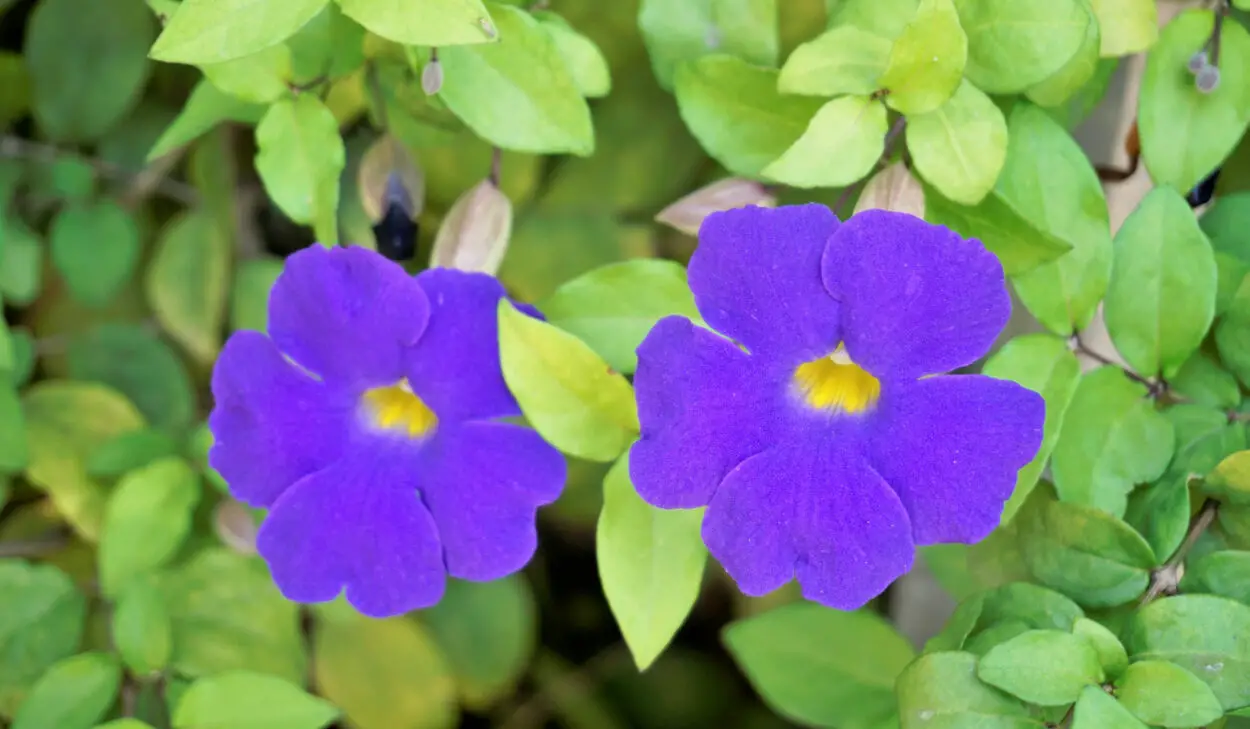
If you seek flowers for your garden starting with K, look no further (or maybe just a little further).
Table of Contents
1. Kiss Me Not (Myosotis)

Kiss Me Not Flowers come in blue, pink, or even white, so it’s quite a versatile plant and is often used in many different garden settings. The five-petal flower, together with the fluffy green foliage that gives it a unique appearance, and its vibrant colors help other flowers to stand out as well.
This flower is also known as the Forget-me-not. According to folklore, when God was naming the flowers, this flower whispered, ‘Forget me not!’
| Botanical Name: | Myosotis |
| Growth Rate: | Moderate |
| Native Range: | Europe, Asia, North America |
| Hardiness Zones: | 3-9 |
| Soil Needs: | Loam, clay, moist, well-draining soil |
| Exposure: | Partial shade to filtered sunlight |
| Blooming Period: | Spring to early summer |
| Water needs: | Regular watering needed |
2. Kniphofia Bees Lemon (Kniphofia ‘Nobilis’)

Kniphofia ‘Nobilis’ also known as Kniphofia Bees Lemon are hardy perennials with bright yellow, red, or orange flowers that often resemble a flaming torch.
Kniphofia Bees Lemon is best grown along borders and beds to add a splash of color while it blooms during the summer months.
| Botanical Name: | Kniphofia ‘Nobilis’ |
| Growth Rate: | Moderate |
| Native Range: | Southern and tropical Africa |
| Hardiness Zones: | 6-9 |
| Soil Needs: | Loam and sandy soil |
| Exposure: | Full sun |
| Blooming Period: | Mid to late summer |
| Water needs: | Average |
3. Kangaroo Paw (Anigozanthos spp.)

As the name suggests, the flower on this plant resembles a Kangaroo Paw. Being a native of Australia, it is an extremely sturdy plant that requires minimal maintenance and can sustain extreme heat as well.
The flowers are medium-sized and thick with a velvety texture.
For the indigenous people of Australia, this flower is a symbol of strength and resilience and is considered a sacred plant. The flowers are commonly used in ceremonies and art. Even after they have been cut, the flowers can last, making them perfect for a cut flower display.
| Botanical Name: | Anigozanthos |
| Growth Rate: | Moderate to fast |
| Native Range: | Australia |
| Hardiness Zones: | 9-11 |
| Soil Needs: | Loam, sand |
| Exposure: | Full sun to partial shade |
| Blooming Period: | Spring to summer |
| Water needs: | Moderate watering needed |
4. Kobus Magnolia (Magnolia Kobus)
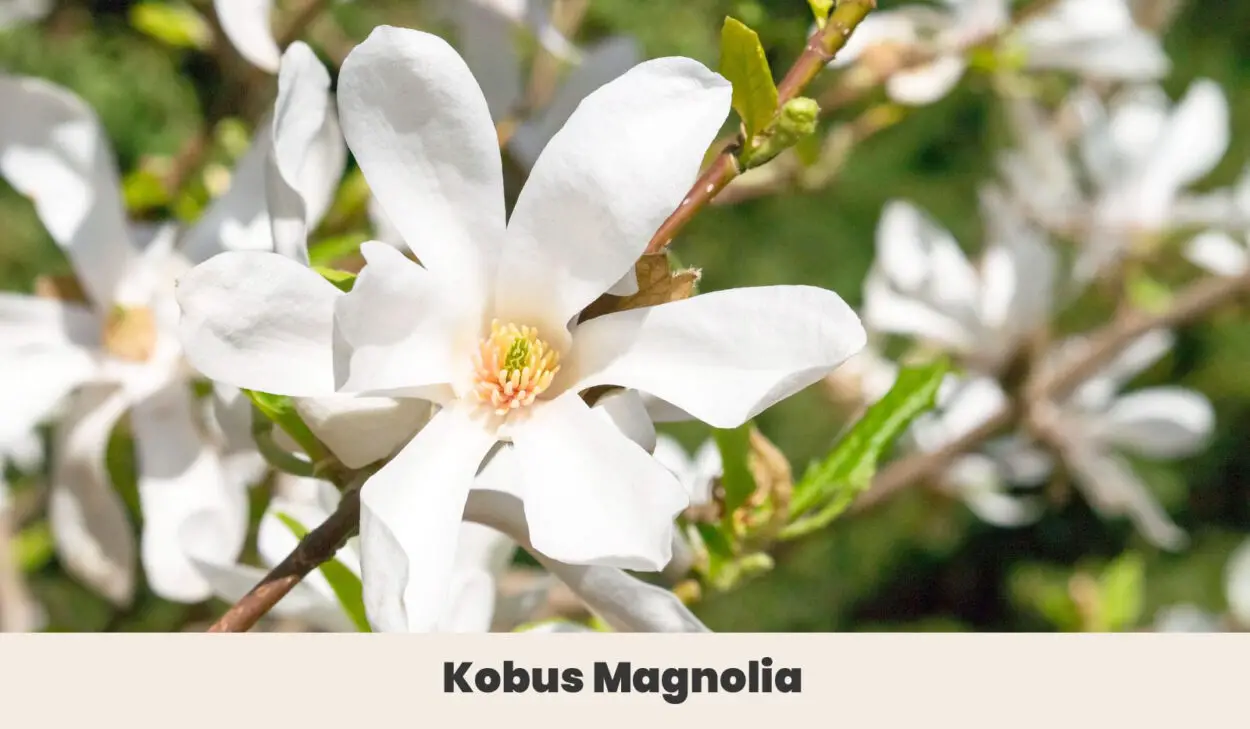
This deciduous white flowering tree native to East Asia is extremely popular in Japan, where it holds great cultural significance. This tree develops fragrant white flowers with a slight pink hue. The leaves are thick and glossy with a deep green color.
Even though the flowers don’t last all year, the lush green canopy creates a picturesque background to any garden. It is considered a sign of beauty, purity, grace, and nobility. You can use the flowers to add color to your cut flower display and also add a floral scent to the space.
| Botanical Name: | Magnolia Kobus |
| Growth Rate: | Moderate |
| Native Range: | Japan, Korea |
| Hardiness Zones: | 5-8 |
| Soil Needs: | Clay, loam, sand |
| Exposure: | Full sun to partial shade |
| Blooming Period: | Early spring |
| Water needs: | Moderate |
5. King Solomon’s Seal (Polygonatum)
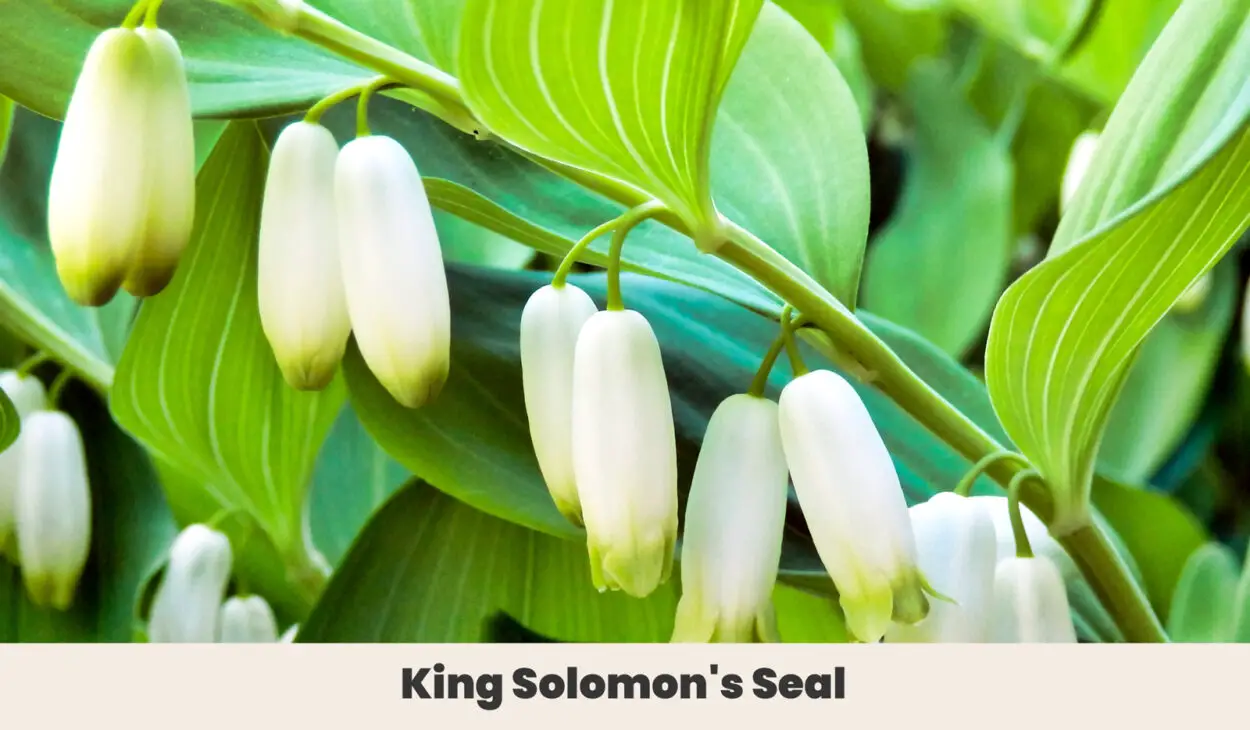
This plant is royal and majestic. It features long arching stems with pairs of oval-shaped leaves and bell-shaped flowers hanging in a weeping style.
It has a place in folklore as it has long been used as a symbol of protection, wisdom, spiritual harmony, and protection.
The root system has markings on it that resemble the seal used by King Solomon. This dense plant can be great for covering large open spaces, or it can be used to provide a beautiful backdrop for smaller flowers in front of it.
| Botanical Name: | Polygonatum |
| Growth Rate: | Moderate |
| Native Range: | Asia, Europe, North America |
| Hardiness Zones: | 3-9 |
| Soil Needs: | Loam, sand, well-draining soil |
| Exposure: | Partial shade to full sun |
| Blooming Period: | Late spring |
| Water needs: | Moderate |
6. King’s Mantle (Thunbergia Erecta)
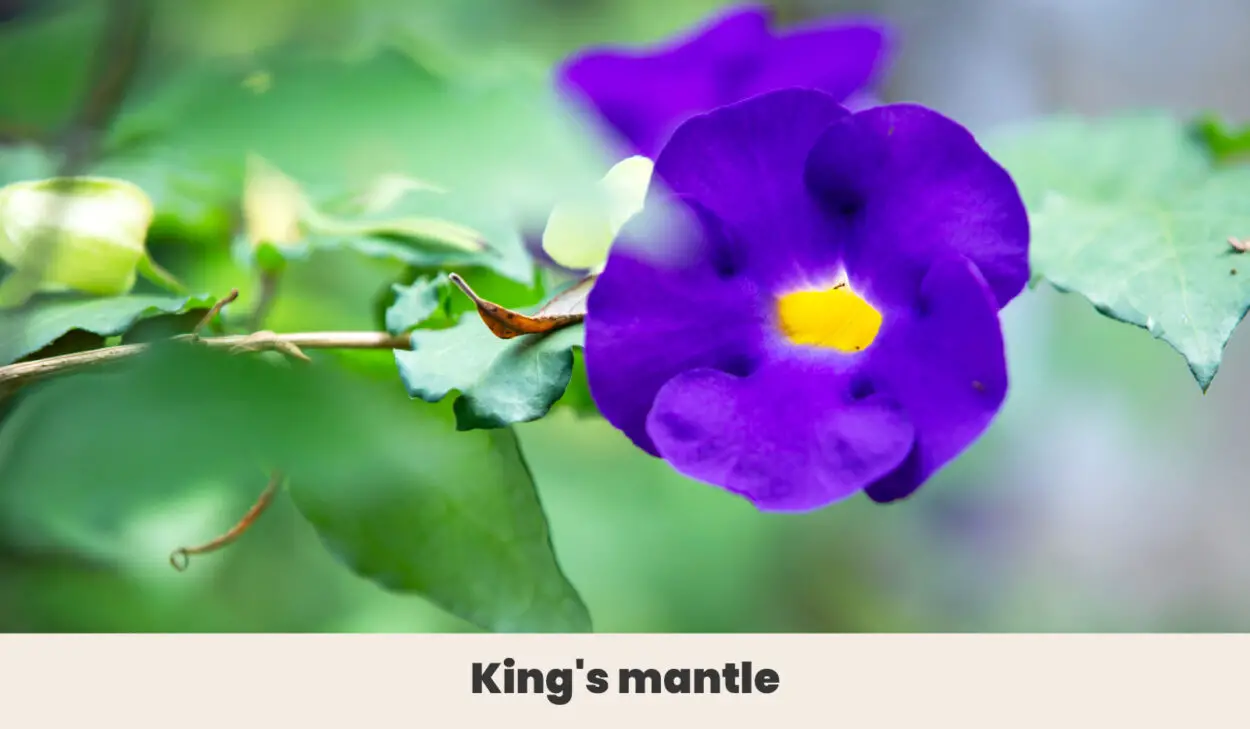
If you are looking to fill a large space, this plant is a great choice. The King’s Mantle can easily grow to 6 feet in height and be over 5 feet wide.
The flowers grow in bunches/pockets all across the plant. It also has lush green leaves that cover a space and provide good shade. The flowers are shaped like trumpets, much like those on the Angel’s trumpet plant.
These flowers are typically purple, but they can also be white or different shades of blue. The flowers do last, so they are good for cut flower displays.
| Botanical Name: | Thunbergia Erecta |
| Growth Rate: | Moderate |
| Native Range: | Asia, Africa |
| Hardiness Zones: | 9-11 |
| Soil Needs: | Well-drained soil |
| Exposure: | Full sun to partial shade |
| Blooming Period: | Spring to fall |
| Water needs: | Moderate |
7. King Protea (Protea Cynaroides)

The Protea Cynaroides plant is one of the largest species in the protea family, with an enormous flower head. This flower is native to South Africa and is the country’s national flower.
It has an incredible appearance; a large head of bright red and white petals color with light green leaves surrounding a center made up of tightly packed velvety flowers that are neatly folded over the center of the flower head.
These flowers look amazing in a cut flower display. It is a very respected flower in South Africa and symbolizes strength, diversity, resilience, and the biodiversity found in the region.
| Botanical Name: | Protea cynaroides |
| Growth Rate: | Slow to moderate |
| Native Range: | South Africa |
| Hardiness Zones: | 9-11 |
| Soil Needs: | Well drained acidic soil |
| Exposure: | Full sun to partial shade |
| Blooming Period: | Late winter to spring |
| Water needs: | Low to moderate |
8. Kiss-Me-Over-the-Garden-Gate (Polygonum Orientale)
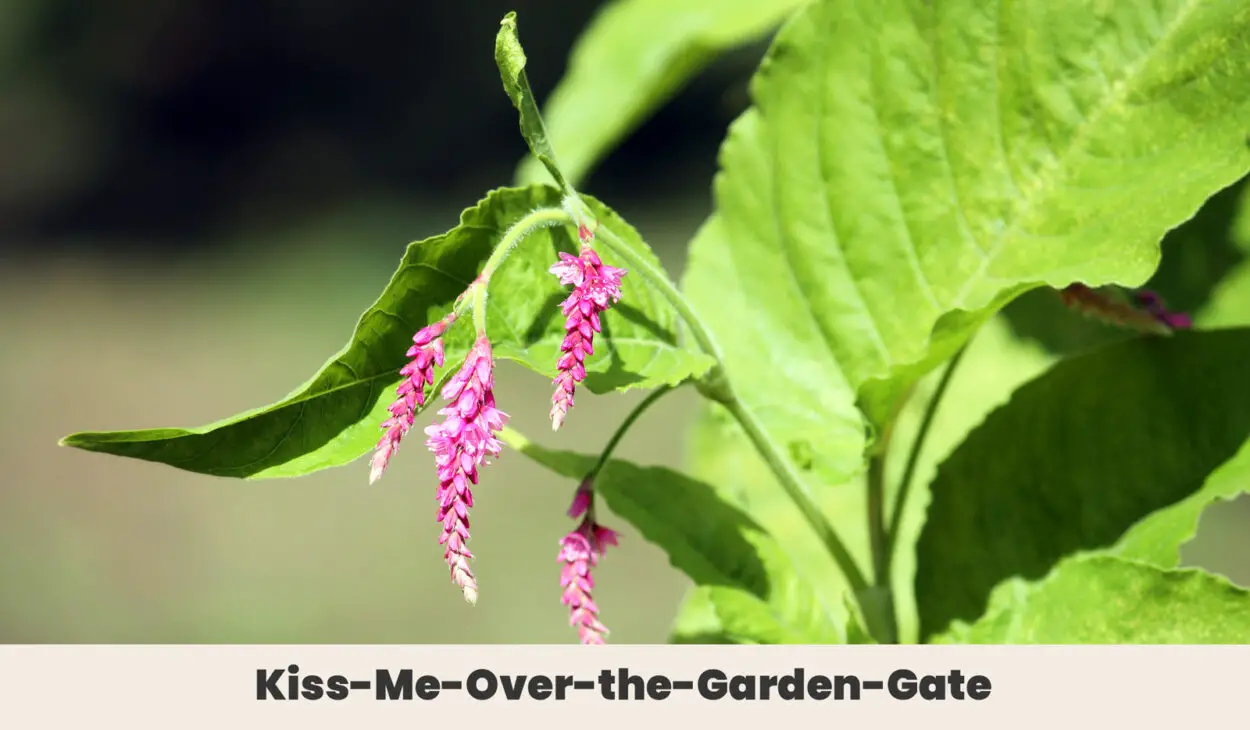
This plant certainly has an interesting name, and it backs that up with looks! If you look at a darker variety of this plant from a distance, you might think there are blackberries hanging from the stems. However, that is actually the flower.
The flowers have a thin, long, cone-like structure with lots of bead-like leaves packed together. These can be light purple, pink, or dark purple.
The name is not related to any folklore, nor does it have any mystical story behind it. Rather, it reflects the playful, fun, and charming nature of the plant itself. Dried leaves from the Polygonum Orientale are a popular choice for flower decorations.
| Botanical Name: | Polygonum Orientale |
| Growth Rate: | Fast |
| Native Range: | Eastern Asia |
| Hardiness Zones: | 2-11 |
| Soil Needs: | Sand, loam |
| Exposure: | Full sun to partial shade |
| Blooming Period: | Summer to fall |
| Water needs: | Average |
9. Kalanchoe (Crassulaceae)

Kalanchoe plants are part of the Crassulaceae family, known for their thick, meaty leaves and colorful pink flowers.
There are many different varieties within the Crassulaceae family, and Kalanchoe is one of the smaller varieties. There are also many hybrid varieties of the Kalanchoe in different sizes and colors.
These flowers are a great choice if you are looking for a table flower or if you have a few tiny pots that you want to use to decorate a small area like a windowsill.
These are tough little plants and easy to grow; however, they can be a problem when grown with other plants. They tend to grow roots wherever they can, so they can often bully their neighbors for space. I recommend growing these in pots and placing them outdoors or on a balcony with other potted flowers.
If growing these with other plants/pots in the vicinity, you will want to prune extra root growth to prevent contamination.
| Botanical Name: | Kalanchoe Crassulaceae |
| Growth Rate: | Moderate |
| Native Range: | Madagascar |
| Hardiness Zones: | 10-11 |
| Soil Needs: | Sand, loam |
| Exposure: | Bright, indirect light |
| Blooming Period: | Some species bloom all year while others have seasons |
| Water needs: | Low |
10. Kaffir Lily (Clivia Miniata)

If you want something that will provide color and warmth to your garden all year round, this is a great perennial! The plant is a native of South Africa, where it is extremely popular as a gift as it is believed to bring good luck and prosperity to households.
It is named after the Duchess of Northumberland, Lady Charlotte Florentina Clive, who was an avid collector of exotic plants. The plant is typically found in shades of bright orange but can also be seen in variations of red and yellow.
| Botanical Name: | Clivia Miniata |
| Growth Rate: | Slow to moderate |
| Native Range: | South Africa |
| Hardiness Zones: | 9-11 |
| Soil Needs: | Sand, loam |
| Exposure: | Filtered or indirect sunlight |
| Blooming Period: | Late winter early spring |
| Water needs: | Moderate |
11. Kidney vetch (Anthyllis Vulneraria)

This plant also belongs to the legume family. However, it doesn’t produce any lentils like its siblings, but its leaves have the same characteristic design. This small plant offers you kidney-shaped leaves along with small yellow flowers that are a delightful addition to your garden.
This yellow perennial stays in bloom all year round, creating a beautiful display for your garden. However, it is a low-lying and rather small plant, so make sure you give it enough space for it to stand out among larger neighbors.
In the past, this plant has been used to treat wounds and injuries and is seen as a sign of vitality and resilience as it strives in difficult terrain.
| Botanical Name: | Anthyllis vulneraria |
| Growth Rate: | Moderate |
| Native Range: | Europe, Asia, North Africa |
| Hardiness Zones: | 4-8 |
| Soil Needs: | Sand, loam |
| Exposure: | Full sun to partial shade |
| Blooming Period: | Late spring to summer |
| Water needs: | Moderate |
Final Thoughts
Whether you are looking for small plants, large plants, seasonal plants, perennials, or any other kind, there are plenty of options that start with the letter K.
Choose an option that works best for the amount of space you have available and the kinds of plants you have in the vicinity. Choosing a good color combination in the garden helps all the plants look better together!

